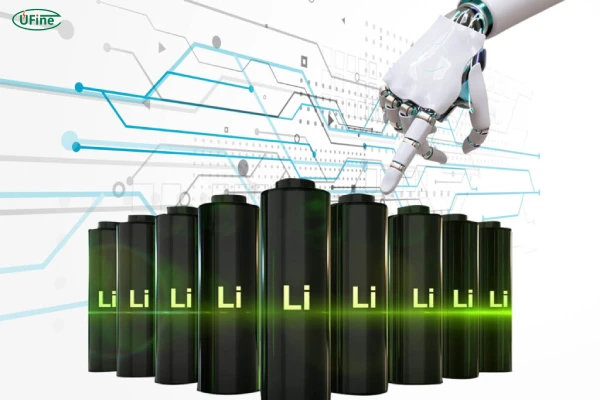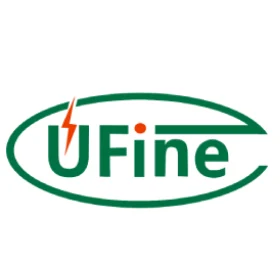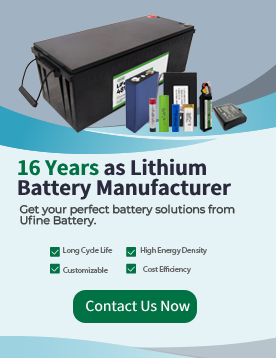AI is rapidly transforming scientific research, with its unprecedented efficiency poised to revolutionize traditional R&D. In 2024, the Nobel Prize in Chemistry was awarded by the Royal Swedish Academy of Sciences to three scientists pioneering AI for Science—a clear signal that the era of AI-driven breakthroughs has arrived.
In the energy sector, major players are already leveraging AI to push the boundaries of battery technology. In December 2023, CATL announced the establishment of an international R&D center in Hong Kong, dedicated to AI for Science to accelerate discoveries in new energy materials, systems, and applications.
We’re using AI to hunt for next-gen revolutionary materials and post-lithium-ion chemistries
Revealed CATL Chairman Robin Zeng during a September 2023 interview with Nicolai Tangen of Norway’s sovereign wealth fund. With over 20,000 engineers, CATL is deploying AI for fundamental material research, simulation, and interaction analysis.
BYD is also embracing AI. Sun Huajun, CTO of BYD’s lithium battery division, highlighted AI’s role in material design, screening, automated battery engineering, and quality control—“It boosts efficiency and could unlock entirely new materials and systems.” Meanwhile, LG Energy Solution has begun tailoring batteries for clients using AI-driven customization.
Part 1. AI: the ultimate research assistant
The battery industry needs a faster “spaceship” to explore uncharted territories. As noted by Chinese Academy of Engineering academician Sun Fengchun, “Traditional battery R&D relied on manual material selection—a painfully slow process. AI now optimizes everything from electrode pairings to electrolyte formulations.”
Qichao Hu, founder of SES AI, explains the paradigm shift: “Old-school material discovery depended on trial-and-error luck. AI computes every viable molecular combination in the universe, simulating properties to pinpoint ideal materials at lightning speed.”
The efficiency gains are staggering:
-
LG Energy Solution’s AI delivers customized cell designs in record time, ensuring consistency regardless of human expertise.
-
CATL’s AI-powered platform screens and validates materials in just 90 days, per R&D director Ouyang Chuying.
-
Academician Ouyang Minggao asserts AI slashes R&D costs by 70–80% while accelerating innovation by 10–100x.
“When science hits a wall, AI breaks through,” Ouyang Minggao quips. “Even top scientists can’t outperform AI in reading papers, drafting reports, running models, or optimizing designs.”
The trend extends to suppliers:
-
Easpring, a leading cathode producer, uses AI to refine high-nickel materials.
-
Yunnan Energy New Material employs AI for ultra-precise membrane thickness control in separator manufacturing.
-
GAC Aion is developing solid-state batteries via AI simulations to solve stability and interface challenges.
Part 2. The AI-driven future of batteries
Solid-State Breakthroughs on the Horizon
Toyota is using AI to fast-track solid-state battery development:
High-throughput quantum calculations screen 20,000+ electrolyte candidates annually (vs. ~100 manually).
Active learning algorithms prioritize materials with ionic conductivity >10 mS/cm, leading to discoveries like Li₉.₅₄Si₁.₇₄P₁.₄₄S₁₁.₇Cl₀.₃ in 2023.
AI predicts dendrite formation with 92% accuracy, guiding interface engineering.
The goal? Commercializing SSBs with 1,200 Wh/L by 2028—40% denser than today’s best Li-ion cells.
Part 3. Beyond lithium: AI and alternative chemistries
Sodium-Ion Batteries
AI is helping CATL and Northvolt optimize sodium-ion formulations, making them viable for grid storage.
Lithium-Sulfur (Li-S)
IBM and Daimler are using quantum machine learning to model Li-S degradation mechanisms at atomic resolution.
Self-Driving Labs and Autonomous Research
The next leap? AI-controlled robotic labs.
Carnegie Mellon’s AI Chemist conducts 200+ daily experiments on lithium-air batteries autonomously.
MIT’s Battery GPT scans thousands of research papers, summarizing findings and suggesting novel experiments.
Part 3. Dawn of the AI for science era
“The next decade’s battery wars will be fought over materials—and AI is rewriting the rules of discovery,” declares Ouyang Minggao. Early triumphs hint at its potential:
A team used AI to design molecular “drugs” that rejuvenate degraded batteries via injection—restoring lithium ions to near-factory health even after 10,000+ cycles. “It sounds like sci-fi, but it’s happening,” researchers marvel.
Yet hurdles remain:
-
Robin Zeng admits “We lack mature AI models for material science—this is a marathon.”
-
Ouyang Minggao notes while tools like DeepSeek excel at data mining, they still lack deep analytical prowess for complex battery design.
Part 4. Challenges and the road ahead
Data Gaps and the “Black Box” Problem
60% of battery research data lacks standardization (Nature Energy 2023), forcing AI to clean noisy datasets.
Some AI-proposed materials are thermodynamically impossible, requiring physics-informed neural networks (PINNs) to constrain outputs.
From Simulation to Scalability
While AI designs cells 10x faster, lab-scale synthesis still dominates 85% of development time (Samsung SDI). Solutions like federated learning (secure data sharing between companies) and digital twins (virtual prototyping) are emerging to bridge this gap.
The Economic and Environmental Payoff
- Costs: AI slashes molecule-to-prototype timelines from 5+ years to <12 months (McKinsey 2024).
- Sustainability: AI-optimized recycling (e.g., Redwood Materials) recovers 95%+ of battery metals vs. 50% in traditional methods.
- Supply Chains: AI predicts shortages (e.g., lithium price spikes) 6–12 months in advance, enabling shifts to alternatives like LMFP or sodium-ion.
Part 5. Final thought
From faster material discovery to self-healing batteries, AI is reshaping how we power the world. In the near future, AI’s impact on science won’t just be an advantage—it will be a necessity.
Related Tags:
More Articles

How to Choose the Best Floor Scrubber Battery for Commercial Cleaning?
Selecting the ideal floor scrubber battery ensures a long runtime, rapid charging, and minimal maintenance for efficient commercial cleaning operations.
Battery for Blower vs Battery for Leaf Vacuum: Which One Should You Choose?
Battery for blower vs leaf vacuum—learn the key differences in power, fit, and runtime to choose the right battery for your outdoor tool needs.
How to Choose the Right Battery for Blower?
Choosing the right blower battery? Consider voltage, capacity, chemistry & usage. This guide helps match the best battery for peak performance.
How to Choose the Best Insulated Battery Box for Lithium Batteries?
Choosing the Best Insulated Battery Box for Lithium Batteries? Discover key factors such as size, material, and safety for optimal protection and performance.
7 Critical Elements on a Lithium Battery Shipping Label
What must be on a lithium battery shipping label? Learn 7 key elements to ensure safety, legal compliance, and correct handling across all transport modes.




